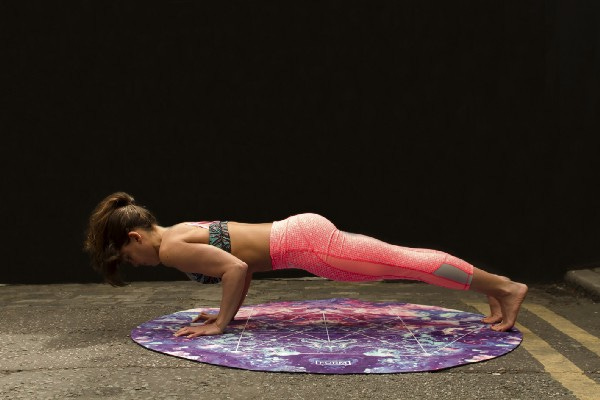The Physical Movement, Lifestyle: 4 Options for Our Health & Fitness
These options are very simple to comprehend, but not easy to execute.
In fact, such is life is it not?
Simple, not easy. That applies to a lot.
Which one do we want to choose ? Simple ? Not easy?
If we want to be proactive, you guessed it, the not easy one.
If we want to have some sense of control over how we move, how we age, the energy we have, the mood we are in, the medication we need (or don’t need), our ability to laugh and love, our self-confidence, and our overall quality of life…well, the not easy one is the choice.
Why do I say “not easy”?
How else could we explain the difficulty most of our population is having in maintaining an adequate level of health?
The stats are staggering.
High level of obesity and sedentary lifestyle.
Poor nutrition
High stress
Lack of sleep.
I could go on, but most of us are aware of the “statistics”. In fact, I am convinced that unless something in these areas have impacted us,
Back to our choice.
Simple or Not easy?
This is the choice around what options we have when it comes to our health and fitness.
I have broken it down to 4 options.
We can accept that we will decline physically as we age, and leave it at that. Accept that fragility is part of the lifecycle.

Photo by Annie Spratt on Unsplash
Unfortunately, most seem to have made that choice and fall into this category.
A large majority of our population in the western world are not getting the required amount of physical activity, not eating well or getting enough sleep.
Of course, with that comes the inevitable crash or health scare.
When you hit 40+, those start to become more real.
Friends, family, work colleagues …most of us have experienced it first hand unfortunately.
2. We can figure it out ourselves.
Some do. Finding an activity that connects us in ways that we desire. Yoga, hiking, cycling, swimming, running, going to the gym, attending fitness classes of some kind come to mind.
If this is working for you and you feel great — then that is awesome.
If that activity is a sport, like running, golf, volleyball or something of the like, then you will find that those activities on their own are not enough.
We don’t play to stay in shape, we stay in shape in order to play.
Even if you have figured out what activities you like, when you hit 40+ you realize that preparation is required to perform at an enjoyable level. If the preparation is not done, you get sore or injured and quit.
I have seen that pattern over and over again, and my coaching revolves around stopping that trend in older adults who do not want to go down that road.
3. Continue to do what you are doing.
This maybe a hybrid of option 1 and 2 above. Continue to do nothing or figure it out yourself.
What I have seen in my travels into hundreds of gyms over the years, in workshops with fitness leaders, in discussions with folks like you and I, is that most are not sure what to do.
That is validated in this article which surveyed 2000 adults in the UK, and found many do not know what to do.
See the article here:
Over half of Brits don't know what to do in gym, study says
More than half of British fitness fanatics are baffled about what to do in the gym, according to new research from…www.independent.co.uk
We can blame the information age here, where overload is the word of the day!
What to do, when to do it, how often etc. can become overwhelming, so we do nothing or little.
4. Re-boot and get started with the right info the right way.
Small time increments daily.
That is where it starts.
Something that can build into a routine, and won’t hurt you.
In fact will give you energy, enough to do something tomorrow.
“A journey of a thousand miles begins with a single step”
— Ancient Chinese proverb.

Photo by Vlad Bagacian on Unsplash
Program design that factors in practice of basic movement patterns that decline as we get older, proper progressions so exercises are customized to your ability and fitness level.
A well-rounded approach that is topped up with metabolic training that will help with fat loss, getting leaner and improvement in strength and endurance.

We live in an age where there are many coaches that can get you started. Very well educated, and experienced, all available at your fingertips.
You will be happy to know that many experts are at your fingertips, online, and do remote work. Many will adapt to your schedule and remove the guess work so you can build your routine, be proactive and get the benefits.
In fact, here are a few bullet points to help you find that coach to suit your needs and budget. Call it a buying criterion to help you on your journey.
Credentials in the science and education of movement, fitness and health beyond a weekend certification.
Experience training folks with your background and experience with fitness. If you have a specific condition or particular injury history, this should be factored into your criteria to find the best coach.
They should have a program that includes assessment and evaluations to help you see your progress (note: this feeds your motivation).
A functional movement approach, not just muscle building and fat loss.
A flexible schedule that can accommodate your needs.
There you have it.
4 options: Accept the decline, figure it out ourselves, continue to do what you are doing, and 4, get some help.
With all that is going on in the world, it is time that we re-evaluate our priority around our own health.
This article was originally published at http://athleticover40.com



